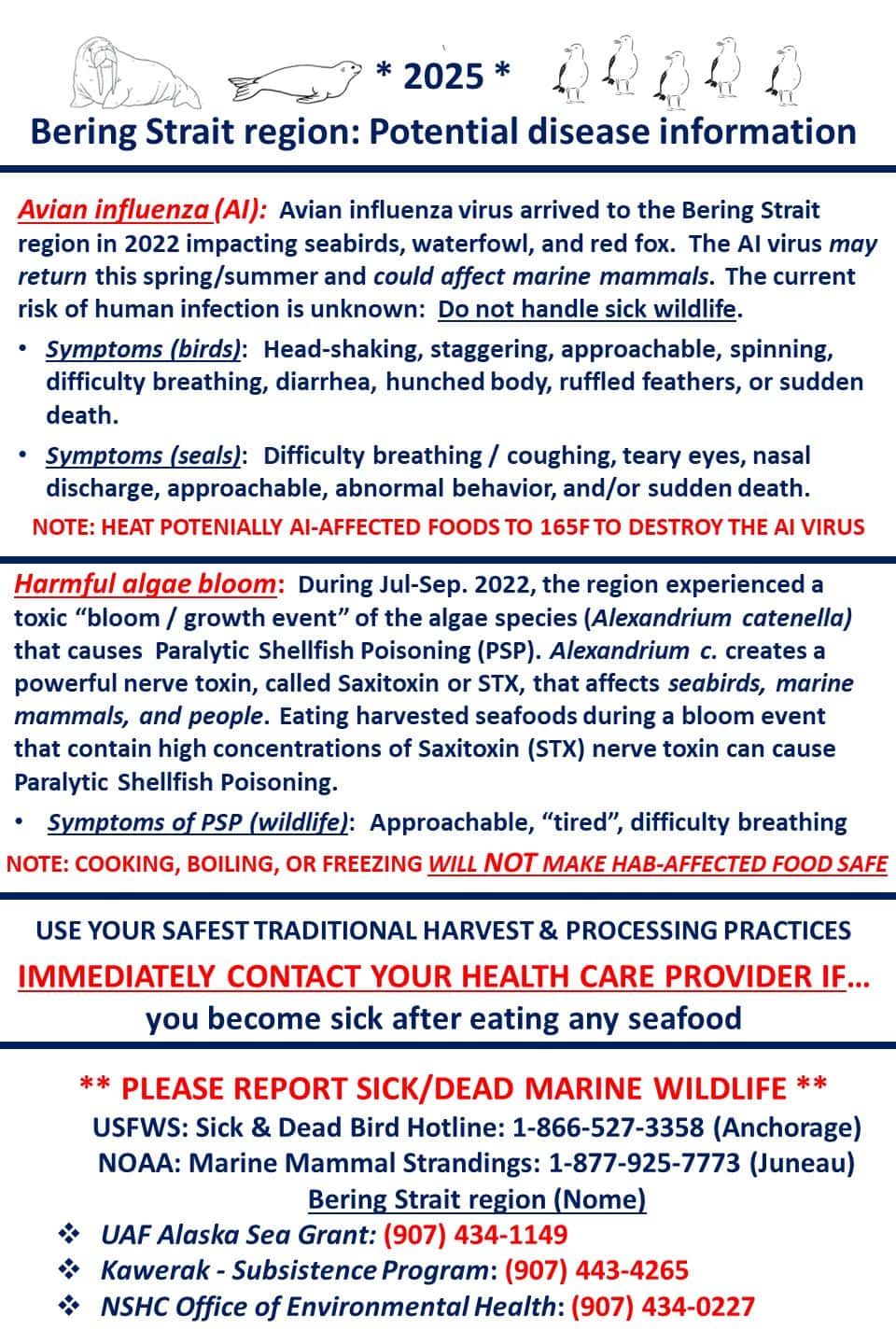SUBSISTENCE RESOURCES
CONTACT INFORMATION
Subsistence Resources
Subsistence Resources advocates on behalf of subsistence users in the protection of customary and traditional harvest of all resources. This program also provides information on subsistence use to state and federal programs, supports proposals and projects that will result in improved management and subsistence resources.

Subsistence in Alaska Timeline
Time Immoralial to 1775
Prior to Vitus Bering setting sail for the North Pacific Ocean the first inhabitants of Alaska’s coastal and interior regions such as Inupiaq, Saint Lawrence Island Yupik, Yu’pik, Aleut, Eyak, Athabaskan, Tlingit, Haida, Tsimpshian, and the closely related indigenous people of Siberia lived difficult lives using long-established methods of hunting and gathering that involved spiritual, cultural, physical and language adaptations that were well suited to the remoteness of the land and their mobile existence. Very quickly the indigenous inhabitants made use of new found technologies borrowed or traded from explorers, whalers, or miners and incorporated them into their subsistence livelihoods.
To this day many first time technologies that were first incorporated into Native life are still used with little or no modern changes such as in marine mammal hunting of the bowhead whale, beluga, minke whale, walrus and seals that are characteristic of the Bering Strait Region. traditional foods were aged, dried, boiled, roasted, eaten raw, stored in oil and/or a variety of grass or wood containers and collected for times during the winter when the summer’s bounty migrated south or went into winter reclusion. This era was and is a time that is not too distant in the memories, stories, livelihoods and language of today’s Alaska Native people.
1743
The Aleutian Islands become an area of intensive Russian occupation and Aleuts became indoctrinated as Russian citizens. Intensive sea otter harvests for the pelts nearly destroys the North Pacific population with Aleut hunters providing much of the labor often under terms of slavery.
Subsistence Resources
Subsistence Resources advocates on behalf of subsistence users in the protection of customary and traditional harvest of all resources. This program also provides information on subsistence use to state and federal programs, supports proposals and projects that will result in improved management and subsistence resources.

Subsistence in Alaska Timeline
Time Immoralial to 1775
Prior to Vitus Bering setting sail for the North Pacific Ocean the first inhabitants of Alaska’s coastal and interior regions such as Inupiaq, Saint Lawrence Island Yupik, Yu’pik, Aleut, Eyak, Athabaskan, Tlingit, Haida, Tsimpshian, and the closely related indigenous people of Siberia lived difficult lives using long-established methods of hunting and gathering that involved spiritual, cultural, physical and language adaptations that were well suited to the remoteness of the land and their mobile existence. Very quickly the indigenous inhabitants made use of new found technologies borrowed or traded from explorers, whalers, or miners and incorporated them into their subsistence livelihoods.
To this day many first time technologies that were first incorporated into Native life are still used with little or no modern changes such as in marine mammal hunting of the bowhead whale, beluga, minke whale, walrus and seals that are characteristic of the Bering Strait Region. traditional foods were aged, dried, boiled, roasted, eaten raw, stored in oil and/or a variety of grass or wood containers and collected for times during the winter when the summer’s bounty migrated south or went into winter reclusion. This era was and is a time that is not too distant in the memories, stories, livelihoods and language of today’s Alaska Native people.
1743
The Aleutian Islands become an area of intensive Russian occupation and Aleuts became indoctrinated as Russian citizens. Intensive sea otter harvests for the pelts nearly destroys the North Pacific population with Aleut hunters providing much of the labor often under terms of slavery.
